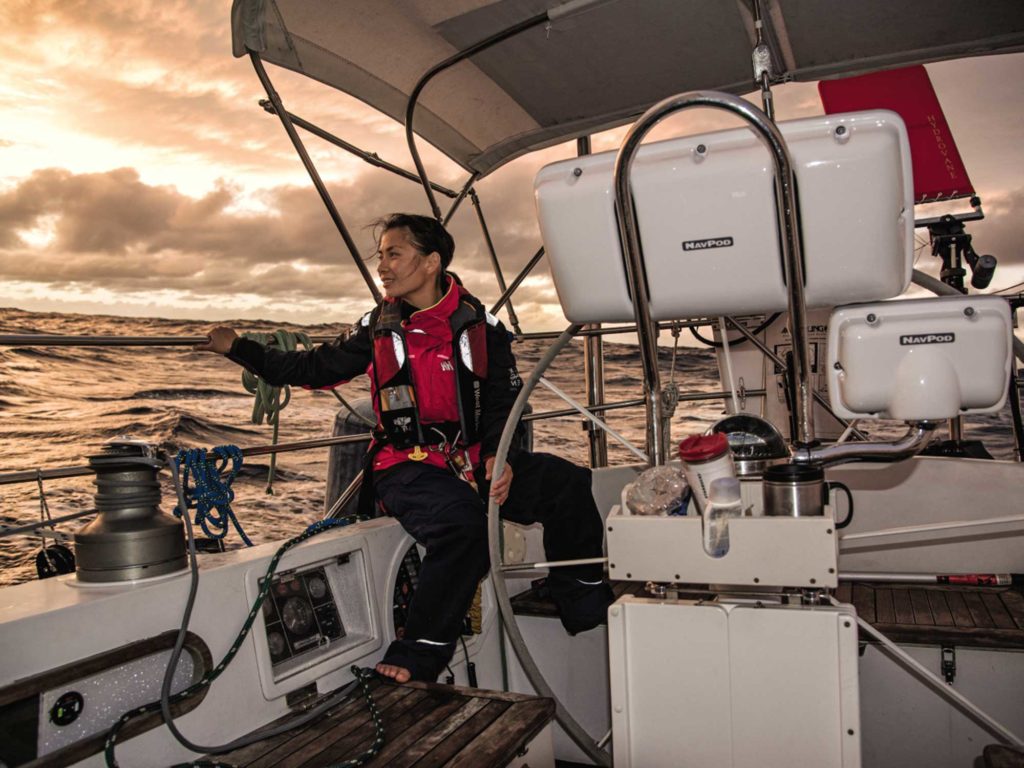
At a time of year when cruisers might point their bows south to escape winter in North America, or head to cyclone-free regions across the Pacific, instead they are contending with a wide array of restrictions brought on by the COVID-19 pandemic as a new normal has emerged over the summer. § Looking ahead, top health officials expect the pandemic to increase this winter—and that in 2021, the threat of coronavirus will remain. We hope for a vaccine and yet expect that any success will take time to reach far-flung corners of the world. For the cruiser, or hopeful cruiser, is it possible to plan a safe watery adventure?
Despite a world shrunk by globalization, regional and national responses to coronavirus continue to vary dramatically. There is no crystal ball, of course, so to form a view of what cruising might look like in the year ahead, we reached out to sailors around the world to see what might be possible.
North America
If the mainstream traveler rediscovered staycations, American cruisers are reminded that from Penobscot Bay to the Dry Tortugas in the east, and Puget Sound to San Diego in the west—the United States coastline offers extensive cruising for all seasons. The US border never closed to maritime entry, but a number of states had lockdown periods, and several continue to require different degrees of testing or self-quarantine. A pandemic flare-up could limit movement or require isolating. Other cruisers are placing their bets on a new period of slower-paced Caribbean cruising.
Allan and Lavonne Shelton were bound for Panama after several leisurely months in the Bahamas when borders started snapping shut in March. Making a rest stop in Jamaica en route, the crew learned that Panama had closed. They rerouted back to their home waters in Chesapeake Bay. “We were concerned about the possibility of being stranded somewhere with fewer cruising options than we would have by returning to the US, and we didn’t want to be a burden on another country’s health system.” Lavonne says.
Like many, the added risk of the virus put a damper on their 2021 plans. “We want to be able to socialize freely while cruising. We love hosting visitors aboard Vinyasa, and enjoy visiting others too. Realistically for us, cruising freely means waiting until a reliable vaccine is widely available and we’ve both received it.” The Vinyasa crew plans to sail between seasonal bases in Florida and Maryland until they feel safe to voyage abroad again.
Vivian Vuong and her husband, Nathan Zahrt, call the Compass 47 Ultima home. And 2020 was meant to be their breakout year, leading offshore training passages with John Kretschmer Sailing, but closures in the Bahamas and Florida Keys put a pall on plans. “By July we were finally able to do a training passage from Solomons, Maryland, to Newport, Rhode Island, and had an epic sail in nice weather, full of wildlife sightings. We saw whales, sharks, and pods of hundreds of dolphins feeding on schools of fish,” Vivian says. But they postponed further training passages, and instead shifted to working on superyachts to afford planned upgrades for Ultima. Vivian speaks for many cruisers when she says, “The hardest part of this pandemic is the uncertainty that it causes,” and in their case, it’s not just where this ocean-girdling couple can go, but the future of their work as well. Looking ahead, they anticipate this winter that Caribbean islands will offer opportunities for their own cruising and, hopefully, voyages they can share with others seeking a life afloat.
Mediterranean
At peak uncertainty when borders closed throughout the region, boats transited the breadth of the Mediterranean without options for landfall. The region later swung hard in the other direction, with uncomplicated movement between most European Union countries with just a few extra steps for clearance. But crews from nations outside the Schengen Area have more to juggle than just the stay limits in member states. If cases surged, how might countries respond? Uncertainty around the answer to this has encouraged many cruisers to focus on a safe harbor where they can make longer-term plans, saving active cruising for a post-pandemic environment.
“Most folks we talk to have a sense of being in a surreal film,” Shannon Morrelli reports from the catamaran Sweetie. They were spending their second winter in Tunisia when cases of COVID-19 surged, and the Monastir Marina provided a friendly haven. “It was treated as a single-family residence; cruisers could walk the docks and the marina’s headland during lockdown.” The lockdown started days after Monastir denizens, the American crew of the catamaran Grateful, flew back to the US for a brief visit in March; they weren’t able to get back to Tunisia until September. “Our circuitous return depended on the fact that Turkey (a non-EU country) was happy to have us and our tourism dollars,” Niki Elenbaas says.
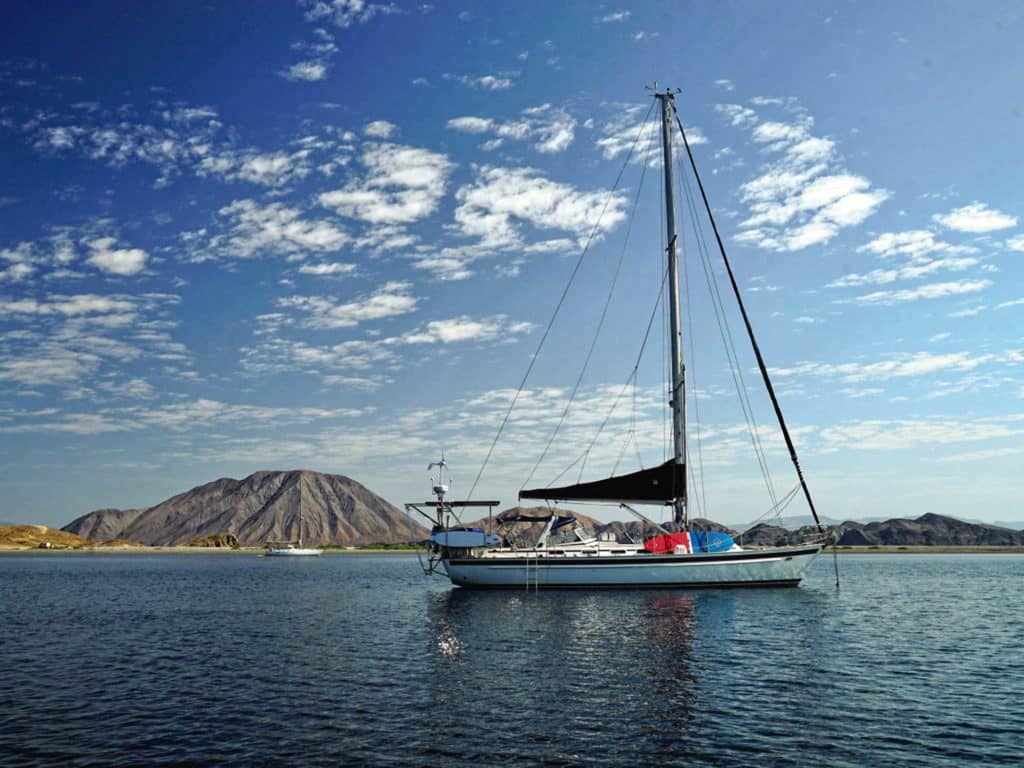
When European countries began to reopen borders to their citizens, EU-based sailors left Tunisia for summertime cruising grounds closer to home. It was about another month before non-EU crews were able to sail north. To mitigate uncertainty ahead, Shannon and her husband, Tony, purchased a yearlong marina contract for Sweetie in Monastir; Niki and Jamie Elenbaas have done the same for Grateful. For 2021, they plan to cruise between Tunisia and other Mediterranean countries as restrictions (and Schengen rules) allow— and they expect ongoing changes.
Complexity’s crew, Barbara and Jim Cole, hail from Puget Sound. They have similarly doubled down to reduce their risk from instability in the Mediterranean with a long-term contract at a Cyprus marina. Barbara recalled the stressful passages they made across the Indian Ocean and up the Red Sea in the first months of the year. Although overdue for a trip home, they don’t think a flight to the States is viable given the risks of virus exposure coupled with the possibility of being barred from returning to their Hallberg Rassy 36. “Our resources and health could be taken away by careless exposure; it would be terrible to suffer a devastating illness so far from loved ones,” Barbara says. Meanwhile, the couple purchased a car to better travel the island. These experienced cruisers are upbeat; they don’t talk about being stuck but rather about the historic ruins and local delicacies: “As cruisers do, we are all making the best of our situation.”
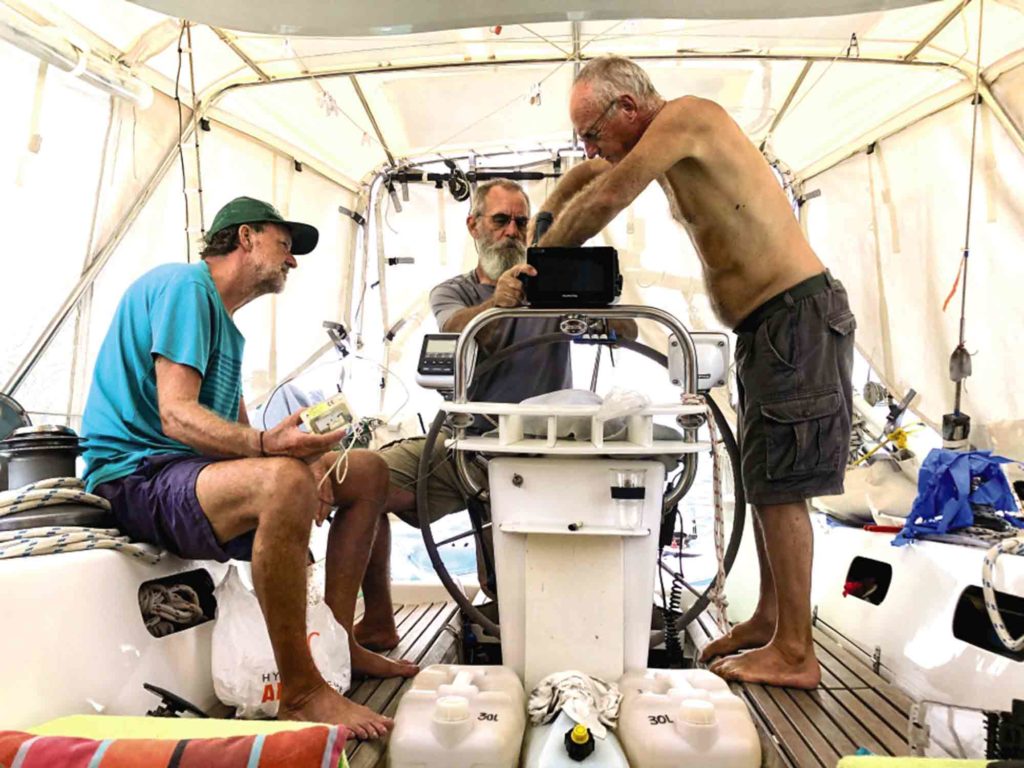
Friends aboard the Ovni 41 Xamala empathize. “We have not moved much since our arrival in Crete [via the Red Sea] because of the uncertainty with infection clusters and lockdowns,” Anita Farine writes. Fortunately, as holders of Schengen Area passports, they’re able to extend their stay in Greece. “We feel for our international friends who don’t have many places to go to after the three months in Schengen.”
The Griswold family had just returned to Trifecta in Turkey. “From April through June we lived at anchor with very few boats, cruising the Turquoise coast,” Matt says. Family intentions were to continue west in the Med, then cross the Atlantic as the American family’s sabbatical cruise winds down. Then Turkey closed the border with Greece, and they gained empathy for cruisers who had felt trapped by the pandemic. Malta’s decision to open a corridor for EU access was a welcome relief. “In Malta, we filled out an extra check-in paper on arrival for the health department; otherwise no questions were asked. Life returned to ‘cruiser normal’ in an instant.” They’ve since sailed to Italy, Monaco and France, and are organizing an informal rally of boats bound for the Caribbean for the winter.
South Pacific
Island nations and protectorates in the South Pacific were among the first to lock down borders, and most remain closed. With dispersed populations and limited healthcare facilities, they remain conservative about reopening: To date, only Fiji and French Polynesia have a process for yachts to apply for permission to enter. Most cruisers responded by remaining in place; a minority made a move to Fiji when their Blue Lane Initiative—a program offering cruising boats easier entries, although with strict protocols—to enter a country commenced, and a few are choosing extensive passages to more-distant safe havens.
Like many cruisers, the crew of Maple intended to sail west from French Polynesia in 2020 after enjoying over a year in the islands with a long-term visa. With about two years left in their cruising kitty, they planned a winding path of island hops to reach Southeast Asia before wrapping up to go home to Canada. When the coronavirus stymied this plan, they evaluated how best to make the use of their family time left. Given the closed borders (or unpredictable restrictions) in their original plan, they’ve determined that it will be best to sail a loop through the north Pacific back to Canada. They’ll begin in January with a 5,400-nautical-mile passage from Tahiti to Okinawa, Japan.
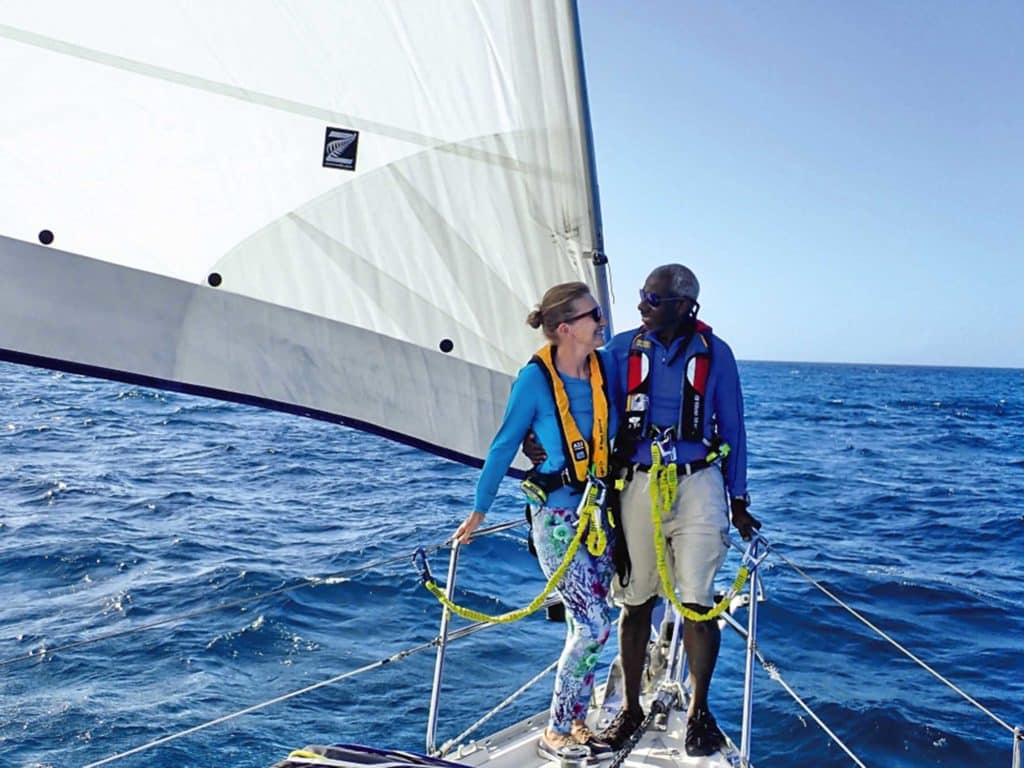
“This will be our longest single passage, probably will be for the duration of our cruising lives, but we are oddly looking forward to it,” Darryl Lapaire says. The route will carry them close to islands of closed countries: Tuvalu, Kiribati, Federal States of Micronesia, and Guam. “Some of the islands are quite small, so we will need to be watchful and ensure we are zoomed in on our electronic navigation devices for this segment. Cyclonic storms in the equatorial North Pacific breed in the waters around the Marshall Islands and Micronesia, so from this area to Japan will form the area of greatest risk for us.”
Fiji and French Polynesia have created extensive permissions processes to request entry, making those countries possible options for those crossing the Pacific. Kris Adams and David Frost are longtime cruisers aboard the Kaufman 49 Taipan. Moored in Huahine, their attitude models that of many cruisers in French Polynesia: “We are very content here. We were hoping to be home after 19 years,” Kris says, but “the east coast of Australia is still nearly 3,000 nautical miles and then still a Southern Ocean passage away from our hometown in Albany, Western Australia.” This crew has the chops; they’re just choosing, as are most, to appreciate where they are instead. They can migrate to eastern island groups in French Polynesia for relative safety during cyclone season.
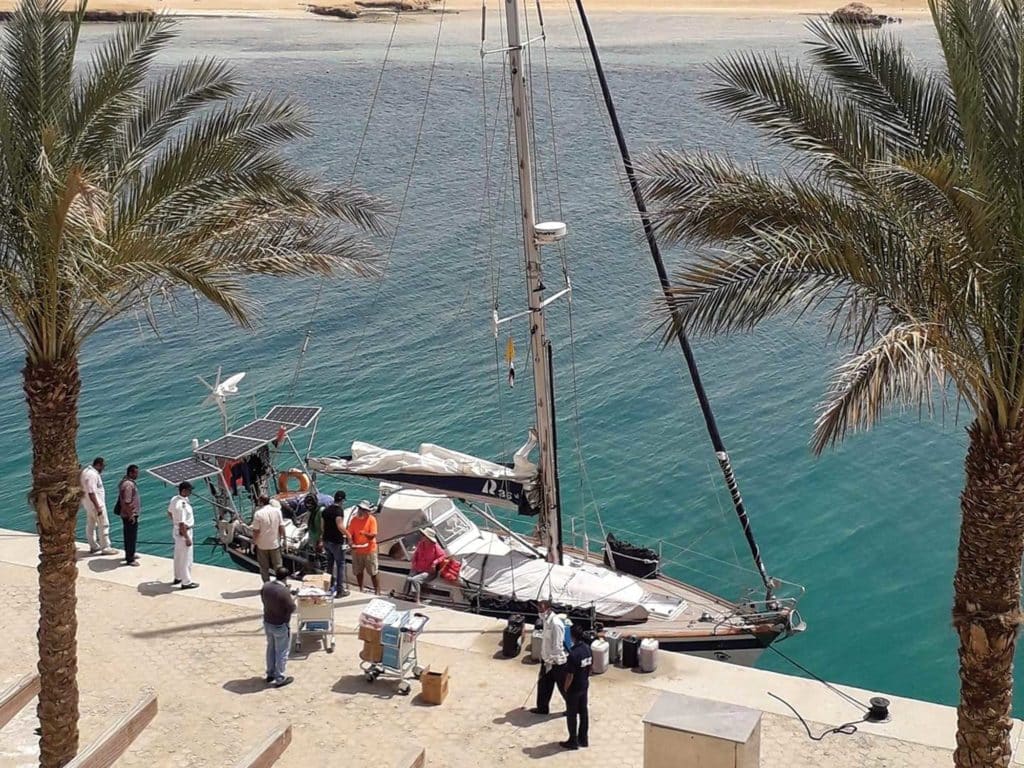
These are the difficult options facing cruisers in this region: Either remain in a hurricane zone for the storm season, or sail significant distances like the Maple crew, or hope for the continued generosity of a host country, or go against prevailing conditions to find an open border—all options fraught with uncertainty of future closures.
Southeast Asia and the Indian Ocean
Although most countries in Southeast Asia aren’t welcoming arrivals, those within borders already are largely accommodated. The lack of options for landfall halted Indian Ocean transits early on; these are now easing, allowing cruisers already there a path from the region. But cruisers are challenged by bureaucracy here, as well as a lack of understanding for their situation, in countries that feel particularly far from home. Cruisers sheltering in place must juggle this uncertainty; many who can are sailing on.
The family aboard Dafne has cruised from North America across the Pacific and through Southeast Asia. As cases of COVID-19 surged, they sequestered for months in Indonesia’s Mentawai Islands. But with a teen heading to college and other family tugs to the US, they made plans to cross the Indian Ocean as soon as there were signs of South Africa opening up. “We would have stayed in Asia if we felt positive about being able to move between countries, but that seemed unlikely and now looks even worse,” Lani Bevaqua says. If a family emergency called them home, they’d be stuck: Interisland travel halted, making it impossible to reach a marina where they could safely leave their boat and access an airport, except by sailing Dafne out of the country. “We felt uncomfortable being caught somewhere that we literally couldn’t leave,” she says from their anchorage in Seychelles. They expect to arrive in the Caribbean next spring, and cruise North America in 2021.
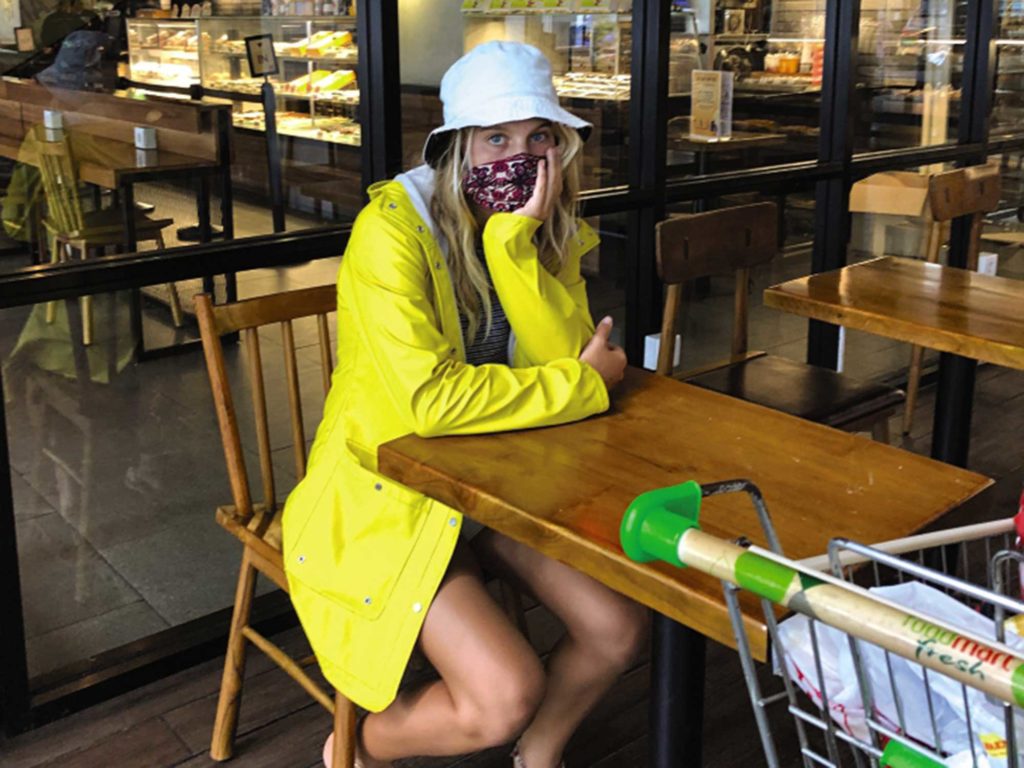
In Indonesia, Adamastor’s crew were relieved that the state of emergency allowed continued visa extensions in this notoriously bureaucratic destination. But Jess Lloyd-Mostyn was troubled that “once the emergency stay permit amnesty was over, the first thing we were asked was, ‘Why have you not sailed back to England?’ It’s very hard to explain calmly how impossible such a thing (a journey of 13,000 odd miles) would be right now, with three young children, and not feel frustrated.”
Jess, husband James and their little ones intended to leave Indonesia earlier this year to avoid exceeding the three-year cruising permit; with no borders open nearby, they might face a hefty bill to import the boat. Yet Jess remains optimistic as they progress toward a clearance port to demonstrate their intentions to depart when it’s reasonable, and appreciates their relative security. “I think that things are harder for cruisers in Thailand because the immigration laws want foreigners to leave, but the Customs laws state that boats can’t be left unattended. Couple that with all the surrounding borders being closed, and what can you do?”
Interim Models for Cruising
While the options vary by region, there are clear themes. Even under the assumption that 2021 will continue with many countries inaccessible, there will be fluctuating regulations in those that are accessible, and added hurdles for clearance into nearly all locales. Two basic approaches stand out: first, taking longer passages to fewer destinations; second, cruising within a country or region where clearances are easier. More-experienced cruisers are better-prepared for the first, and any can choose the latter.
For most cruisers, the patience born of our adage that plans are made in the sand at low tide is playing out in new approaches. Some are reducing range, or keeping potential passage distances to reach backup-plan harbors in mind when making destination decisions. Others are slowing down, whether forced by quarantine or to enjoy fewer places for longer. And nearly all anticipate more hurdles—for more paperwork, more communications requirements and more fees.
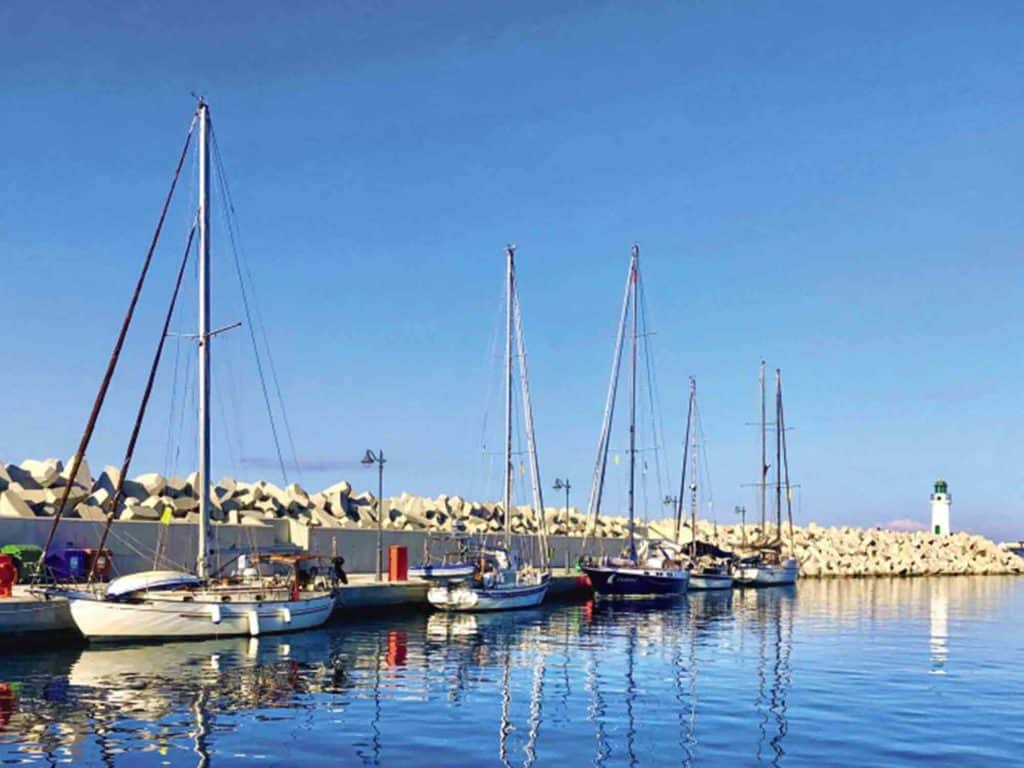
What’s gone until the world has a widely available, reliable vaccine is the model for visiting a string of countries in a season or even a year. Bucket listers in search of a circumnavigation can’t count on the access to ports (regulations might change while underway) or access to goods or repairs in a typical fast-track loop.
Starting Under Pandemic
Should those with a long-held dream to go cruising hold off on a 2021 departure? This decision is based on individual circumstances and risk tolerance, just as in any other year. The stakes are just higher now, and the well of patience, perseverance, and skills needed for safe and comfortable cruising tapped further.
On the west coast, the reduced size of a casual rally that annually progresses down the US West Coast highlights this decision. The Coho Ho-Ho is an informal fleet where crews head south from Puget Sound on their own timetable, sharing information and camaraderie along the way. In a typical summer, the fleet is comprised of a few dozen boats; this year, all but two canceled southbound plans. Cruising in Mexico on his Lord Nelson 35 Jean Anne, Steve Olson says: “I was a bit shocked and saddened when I heard that cruisers were opting not to sail down to Mexico due to COVID. Knowing what I now know about Mexico and Mexican cruising, I feel much safer and less at risk of contracting COVID down here than I would in the US.”
Yet for many, the pandemic is motivation to set sail despite the challenges. Yacht brokers report that boat sales are booming. Subscribers to the coaching service my husband, Jamie, and I have to help cruisers and potential cruisers succeed is running at double pre-coronavirus levels. One family we’re working with recently flew to Grenada (via a couple of other island hops because there are no direct US flights); they waited out a 14-day quarantine in a beachfront cottage there before moving onto their new-to-them catamaran. Another family flew from the US to Latvia for a 14-day “country cleaning” before heading back across the pond to Martinique to a boat waiting for them. Still others are beginning on the US coast, where no international clearance is needed to spread their cruising wings.
While 2021 might not be a good year for new cruisers to strike out across oceans, ranging from a point of departure is reasonable. The slower pace and necessity to watch regulations might even facilitate softer landings into the lifestyle, and open experiences missed on a faster track.
Looking Forward
As this issue goes to press, COVID-19 cases are rising again in many regions. Lessons from 2020 suggest that advance planning will continue to be difficult, and travel corridors might not emerge. Many common cruising routes—such as exploring the Caribbean chain, sailing coastwise through Latin America, or winding across the South Pacific—include migrations through countries that are more vulnerable to outbreaks, with healthcare systems that sailors might not wish to test. While it is still possible to cruise, it is more complicated.
Cruising now leans on deeper skills and resourcefulness. It requires patience and research, and costs more. But a focus on experiences rather than route schedules can bring fresh perspective into the joys of voyaging. More than ever, cruising will be about sensitivity to the locales hosting our vessels. It will be about taking the time to find empathy for the outlook of the local communities we anchor near.
Aboard Totem, our family’s cruising plans were upended in 2020. Instead of departing Mexico to sail to the South Pacific, we self-isolated for months in the Sea of Cortez. As much as we crave a return of passagemaking to faraway places, I expect that 2021 will continue to feature tacos instead of bringing back poisson cru. But for our crew, as for many cruisers, the joy of life afloat stems from experiences within the journey—not chalking up destinations. In the past week, wildlife encounters with a transient pod of orcas, filter-feeding whale sharks, and yipping coyote packs in the moonlight reminded us again that magic exists wherever you choose to seek it, and doesn’t know there’s a pandemic on.
Follow along with Behan Gifford and the rest of the Totem crew at cruisingworld.com/sailing-totem.
New Clearance Requirements
Arriving into a new country just got more complicated. Processes and paperwork vary; this list is based on a common range of requirements among Caribbean islands.
- Have arrival authorization issued prior to departure from a previous port.
- Take a pre-departure COVID-19 test, generally specified to be the RT-PCR (nasal swab).
- Carry proof of health insurance.
- Expect a health check on arrival, including additional COVID-19 testing.
- Expect quarantine days, depending on travel history; some islands credit sea time.
- Carry a supply of approved face masks and a thermometer.
- Use a contact-tracing app while in country.








